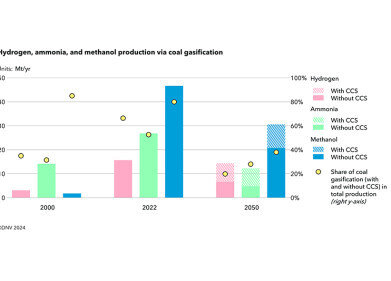Green Energy
What Is Carbon Trading?
Jul 07 2021
In order to avoid a global temperature rise of above 1.5°C compared to pre-Industrial Revolution levels, it’s imperative that carbon emissions are curbed in the coming years. While renewable sources of power can play an important role in achieving a more sustainable energy profile, it’s likely that fossil fuels such as oil and gas will continue to comprise part of the plans of many countries for the foreseeable future.
As such, another method of limiting carbon emissions as much as possible is urgently required – which is where carbon trading comes in. Along with sustainable carbon capture and storage (CCS) technologies, voluntary offsetting schemes and other eco-conscious initiatives, carbon trading is one of the biggest weapons which governments can wield in order to clean up the environmental profile of their industrial and commercial interests.
How does carbon trading work?
Carbon trading works via cap-and-trade schemes, which place a maximum threshold on the volume of emissions that a company can emit in a given year. Those firms which expect to exceed their allowance can purchase carbon credits from others who have implemented technologies or modes of operation that mean they will have excess allowance left over. In this way, businesses are financially motivated to reduce their emissions.
The price of carbon credits is dictated in the same way that the majority of other commodities are – according to the laws of supply and demand. The emissions permits themselves are issued to companies operating in particularly polluting industries and are generally sold via an auction process, or else distributed for free. However, this latter approach is less effective, since it devalues the concept and reduces the incentive for companies to limit their emissions.
The story so far
The idea of a cap-and-trade scheme was first introduced under the 1997 Kyoto Protocol. However, the project was dogged by accusations of corruption and a lack of transparency, meaning it soon folded. Even as recently as 2015, undercover reports have exposed how countries and companies participating in carbon trading initiatives often misrepresent or outright lie about their environmental performance.
While a global cap-and-trade scheme has, as yet, proven impossible to implement, there are several national and regional models which have produced favourable results. The EU’s system, for example, is the oldest cap-and-trade scheme in the world, while the US has experienced a tangible reduction in the amount of acid rain falling from its skies as a direct result of a sulphur dioxide cap-and-trade initiative. Meanwhile, China recently introduced the world’s largest cap-and-trade network, which involves twice the volume of emissions dealt with by the EU.
Problems ahead
Carbon trading as a concept has much potential, but it also faces a glut of obstacles for those implementing it to overcome. The EU has struggled to ensure that all member states use the system responsibly, while the 2008 economic crisis saw the price of carbon plummet and the effectiveness of the scheme fall apart. One of the lesser reported environmental consequences of the coronavirus pandemic was a similar collapse in the price of carbon credits, though thankfully they have since rebounded.
Other issues which plague carbon trading schemes are underhand tactics employed by governments themselves. Whether it’s through setting overly generous thresholds for their industries and businesses or misreporting their figures via bookkeeping chicanery, there are many potholes which regulatory bodies must navigate to make carbon trading a success. However, it can certainly offer some value in encouraging companies to implement more sustainable practices in the short and long run.
Events
May 05 2024 Seville, Spain
May 13 2024 Munich, Germany
May 23 2024 Beijing, China
May 23 2024 Beijing, China
Jun 10 2024 Algiers, Algeria














